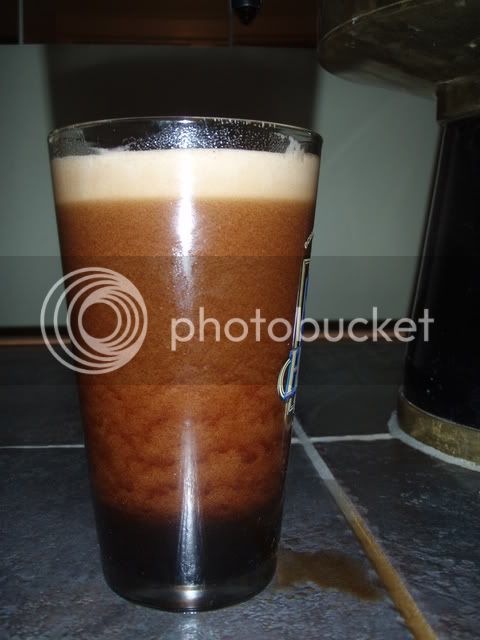jonp9576
Well-Known Member
i mean does it only work in one direction. it looks the same both ways.

I've had quite the opposite experience on both counts. My stout faucet pours at exactly the same rate whether you push or pull the handle. I found it very simple to achieve success by lightly force carbonating a beer, then pushing it with inert gas through the stout faucet (32 psi seems to be the magic number for my setup)....Pushing goes slower but either way it still comes out fairly quickly, even though it's going through the restrictor plate and through the small nozzle....
...Nitro beers are a pain in the ass and that's why most people never bother...
Nitrogenated beers typically contain very low amounts of carbon dioxide, around 2.4 g/L or 1.2 volumes, and an even lower concentration of nitrogen of about 20 mg/L. Typical beers contain about 5 g/L of carbon dioxide and no nitrogen. The concentration of nitrogen is much lower than the carbon dioxide content because nitrogen is not very soluble in liquids. When dispensed through a special faucet, the nitrogen breaks out of the beer and forms very small, stable bubbles. Nitrogen foams are much more stable than carbon dioxide foams because the atmosphere is about 79 percent nitrogen and there is not much driving force between the gas concentration in the bubble and the concentration in the atmosphere. Thats why nitro beers have such awesome, stable foam. The density and creaminess of the foam also adds a terrific mouthfeel to the beer.
Actually, I don't need to do any more research...I've already done it! I use pure Argon (instead of beer gas or pure nitrogen) to push my beer through a stout faucet. The foam is just as dense and stable as it would be if it were pushed with nitrogen. I carbonate with CO2 to about 1.0-1.5 volumes before putting the beer on Argon. When I undercarbonated a beer, the foam was nearly non-existent. I accidentally overcarbonated one, and it was all foam (very dense, stable foam). So, I rest my case. Nitrogen has NOTHING to do with the stability of the foam. It's simply a way to serve under high pressure without overcarbonating.


Enter your email address to join: